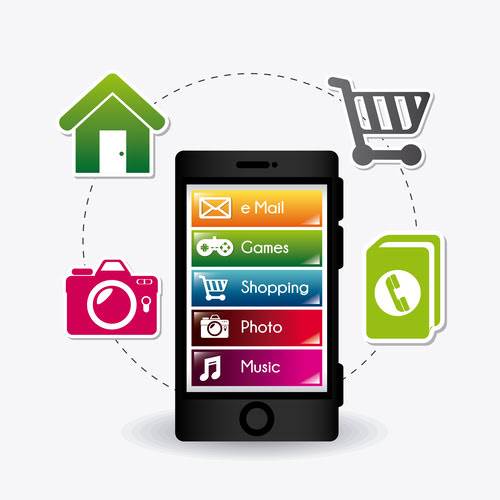Native apps, on the other hand, are applications that are built specifically for a particular platform, such as iOS or Android. Native apps are installed on a user’s device through an app store, designed to take advantage of the device’s hardware and software capabilities. Native apps are built using specific programming languages and tools native to the platform, making them highly optimized for the platform they run on.
Validating the various advantages that businesses have to gain by extending to PWAs, ReactJS has documented the support of Progressive Web App Development using its framework. A technology stack that is popularized as React PWA alongside React, it comes with the opportunity to add next level features to the mobile application. There are a few ways in which you can build a mobile presence and enable your users to access your content on their mobile devices. Consider a PWA if you need an app with simple functionality, but without the large time and cash investments.
PWA vs Native App: Which is Better in 2023?
If you primarily want to improve the speed and accessibility of your website, then a responsive web application is a good option. But, Native Apps have direct access to all of the devices’ hardware and software features. However, it’s simpler for developers to apply the most secure methods, such as two-factor authentication. In addition, Native Apps must comply with the requirements of various standards established by app stores before they can be accepted. If the user wants to use native apps then first of all he will have to install them from app stores.
In the past few years, the number of mobile users has increased sharply and the need for a better web experience on mobiles has arisen. Progressive web apps (PWAs)are the next level of regular web apps. All the main benefits of responsive web apps lie in responsive design. If it is enough for your audience to have a positive experience from interacting only with the interface without additional functionality, then this technology will certainly suit you. So you’ve set up a great e-commerce mobile app, but it’s not living up to your expectations. Creating and managing an e-commerce application is no easy task…
What is the best option: PWA or Native App?
So now you know the difference between PWA apps and native apps from a developer perspective, it’s time to move onto PWA vs native and the differences from a user point of view. Even though PWA applications run over secure HTTPS connections, they are still more prone to malicious attacks than native mobile software. Since any progressive web app is a bunch of JavaScript code that lives and functions in a mobile browser, developers have to apply additional effort to secure this software. This reliance on the well-trodden ground of JavaScript callbacks and DOM elements means that development is significantly easier compared to building a native app.

Natively spares you from the trouble of developing and maintaining different codebases for Android and iOS. By developing the app once, you can distribute it on both platforms. Moreover, any changes on the web app are automatically updated to the respective native apps. With the advent of technology and the usage of software applications, a lot of data has been captured and stored for further processing. Using these data sets, most of the businesses are deriving their decisions based…
App Store Considerations
All the information is stored in a web browser’s cache so all that is required is the app to be saved onto the mobile device to give it access to your device’s system resources. If native apps are like fishes, cross-platform apps are like ducks. Many big brands, including Starbucks, Twitter, and Uber have all chosen to make PWAs a part of their web strategy. At the end of the day, there’s a lot of benefits to using a PWA over a native app, but there are also benefits to using a native app over a PWA.

Make sure you have clear expectations, considering the difference between progressive web apps and native apps. While native apps are written to run on mobile devices, PWAs are written to run inside a web browser. Native apps are developed with the programming languages of each platform (Objective-C progressive web app pros and cons and Swift for iOS and Java for Android), whereas, PWA uses HTML, CSS, and JavaScript. Designing a progressive web app is substantially less expensive than developing a native app or a web app. You do not have to pay money to submit an app to an app store, unlike native programs.
- Developers need to replicate a lot of what the native and mobile SDKs already provide, so it still means investing in research and development, the same as you would with native app development.
- Cleveroad highlight that this instant use opportunity for PWA may allow a higher volume of traffic to reach your PWA than your mobile app in an app store initially.
- Consider the differences between PWA vs. native apps and their pros and cons when choosing one approach over the other.
- In general, it is said that you need to budget 20% of initial mobile development costs when calculating the cost of the native app maintenance.
- Given that, the final cost of a native application will become twice as expensive.
Our sales consultants will invest extra effort to tailor the site to your business needs and provide it to you sooner. If you’re interested in an omnichannel solution on Magento platform, you can book a free consultation with our experts. PWAs are more secure than normal web apps because they have to run under HTTPS.

If you want to build credibility for your brand, having a high-quality app published on a top store from Apple, Google or others will help you to boost your reliability in the eyes of customers. A native app is preferable when creating high-security apps that will handle things like sensitive client data in industries such as finance, health, or banking. To provide an appropriate amount of security, the advanced control provided with a native app is required. For example, geofencing could be used by businesses to make customers aware of in-store promotions as soon as you are near the store. Geofencing can also be used to craft better targeted ads, location-based features in apps like Snapchat or Pokemon GO, and much more. If we were to make the apps natively for iOS, iPad OS, and Android, the development process would be at least 5 months, and the app wouldn’t be available on the desktop.


